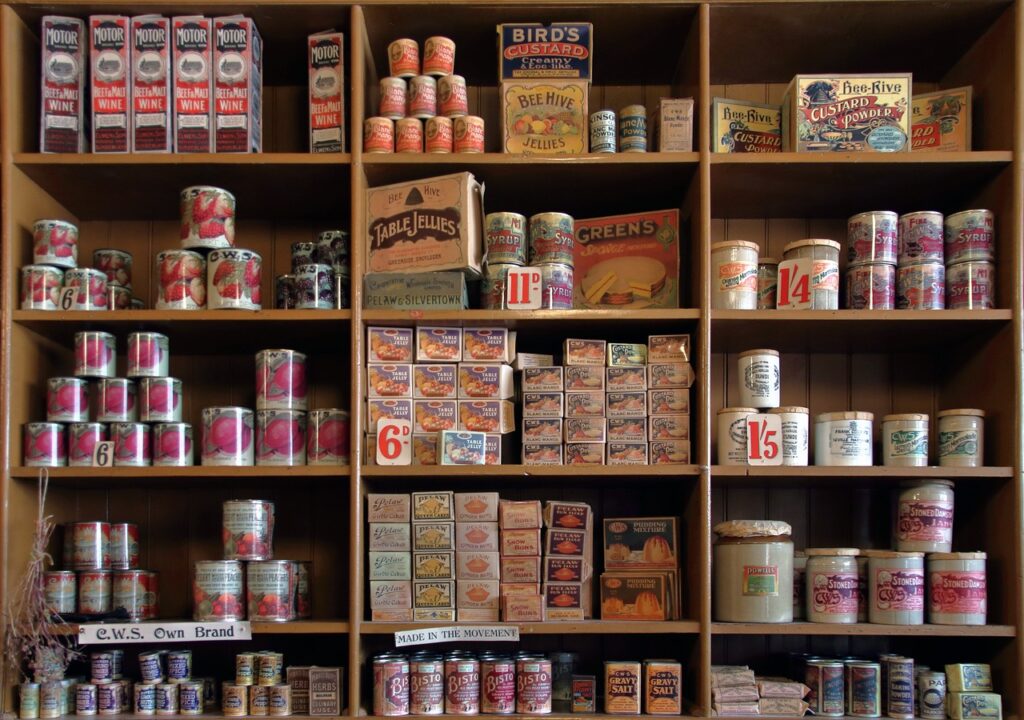Louise stared at the nearly empty sack of flour. Her eyes flitted to a canister tucked in the back of an upper shelf. She pulled it down, lifted the lid, and peeked inside. Assured the four cups of flour she’d set aside remained untouched, she sighed. But guilt jabbed her. If people knew she’d squirreled away portions of recent flour allotments, would they think her a hoarder? Truly, it wasn’t that much. She chewed her lip—would it be enough for Bobby’s birthday cake?

Geez, Louise! What’s the story here?
The Office of Price Administration (OPA) could answer that question.
The troops serving in World War 2 needed provisions and the American people were called upon to sacrifice a portion of their personal supplies to make that happen. Therefore, beginning in 1942 and ending in 1945, OPA issued books of ration stamps for common staples. Families received about half the quantity of staples normally consumed. Thus, flour, sugar, butter, coffee, and fat were in short supply, along with meats, fruits, and vegetables. (Note: Gasoline and tires, along with other non-perishable items were also rationed.)

American households would tell you they turned rationing into patriotic support for the troops. “Victory gardens” became popular. Yard grown vegetables for family consumption meant more canned goods for the troops. A war time edition of a popular women’s cookbook encouraged creative cooking. It published recipes that utilized readily available foods and offered tips, including suggested substitutes. For example, molasses or honey were a few sweeteners that could be used instead of sugar.
Neighbors, friends, and family employed a bartering system.
And we’ll just whisper the word “black market” for ration stamps and stolen items.
Grocers might chime in with their thoughts on the matter of rationing.

On the positive side, the stamps allowed them to limit purchases. Shelves did not deplete as quickly, and the restricted goods landed in more households. This countered the problem of runs on foods, especially when rumors spread that a specific commodity was destined for the rationing list.
On the flip side, one wonders how many shop owners learned a nice way of saying “no” to friends and family who hoped for more food than the ration stamps allowed.
Restaurant Owners probably had some not-so-nice words to say about rationing—it threatened their livelihoods. OPA required owners to apply for ration books, and as part of the process, they needed to present their menus and pricing. If approved, they were awarded twenty to thirty per cent more ration coupons than households, but not enough to sustain their traditional offerings.
Menu adjustments according to stamp allotments and food availability became common. The frequency of changes prompted growing use of paper menus.
Many restaurants did not survive the war years. Not only was the flow of food adversely affected, but many owners and workers joined the military. Not all wives were prone to operate the understaffed eatery as well as tend to their families.
And what does Louise think of rationing?

She waits for the morning when she can visit with a friend, sip more than one cup of coffee sweetened with real sugar, and nibble on a plateful of cookies. She dreams of the evening when she doesn’t need to pull out boxed macaroni and cheese for supper—again. She longs for the day when she can bake her son’s favorite birthday cake without shorting her family on flour for bread or biscuits.
For Writers of Fiction Set in World War 2 Era
The world of food rationing can boil with plots or character driven stories, bake with drama and tension, yet bubble with joy from supporting the troops.
The pickings in the pantry may be paltry, but the writer’s mind would likely be full to the brim.

Jeannine Brummett lives in South Carolina with her husband of nineteen years, Don, who shares his three adult sons and three grandchildren with her. Reading is big on her list of things to do, but she also thrives on TV crime dramas, NBA basketball, and marvels at the critters and fowl life that live at the pond behind their house. She loves to sing praise songs, attend Bible Study, and help at a local food pantry.




No Comments